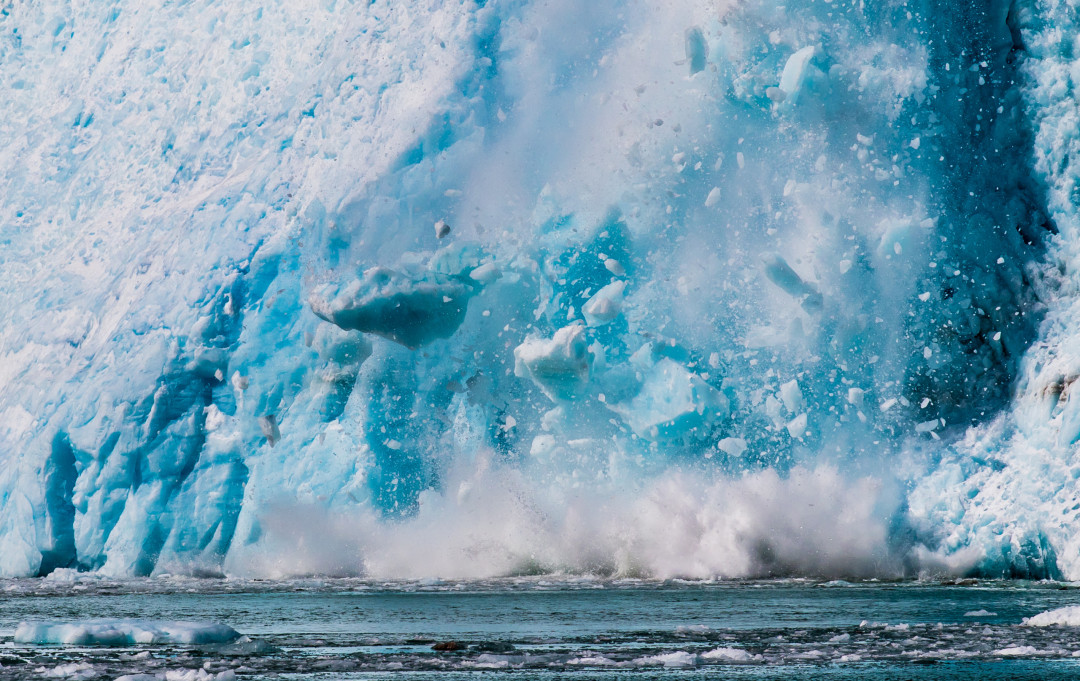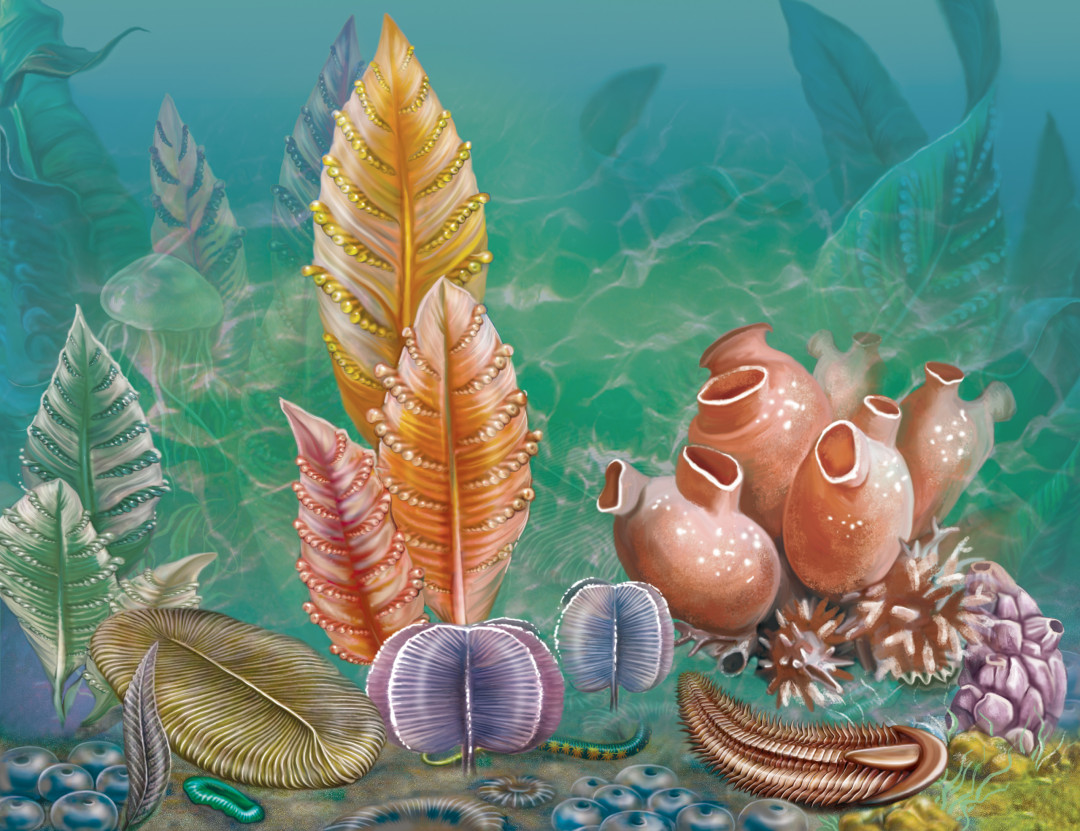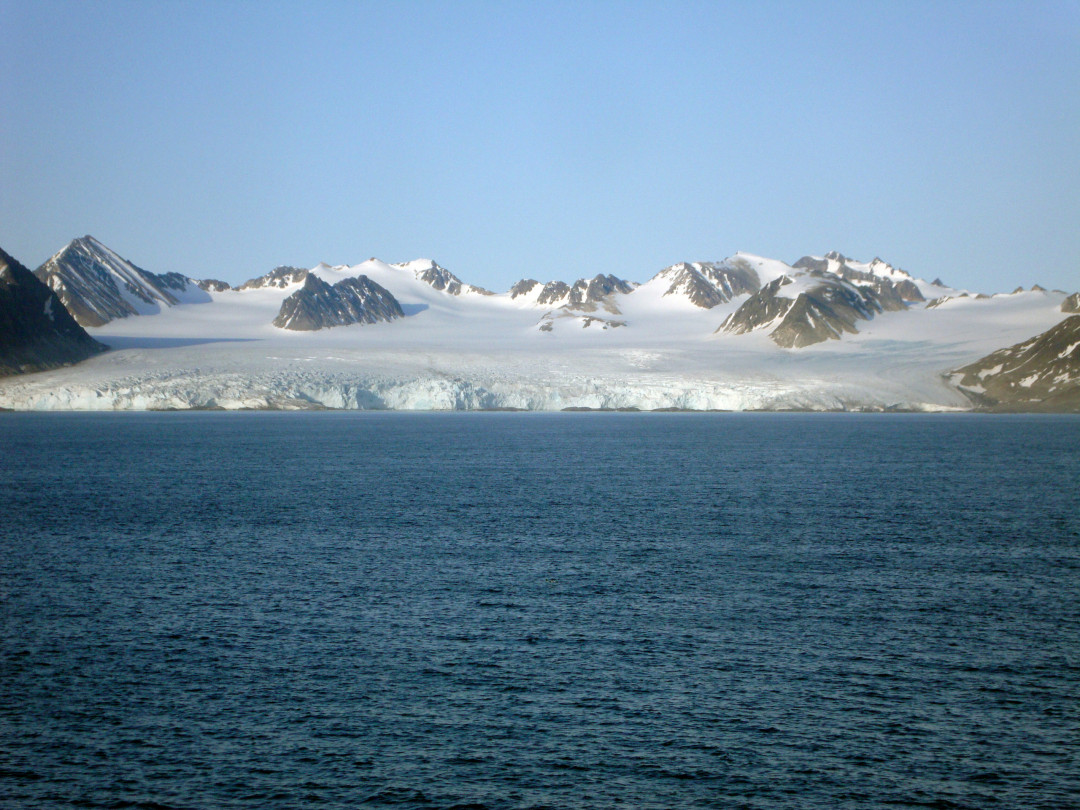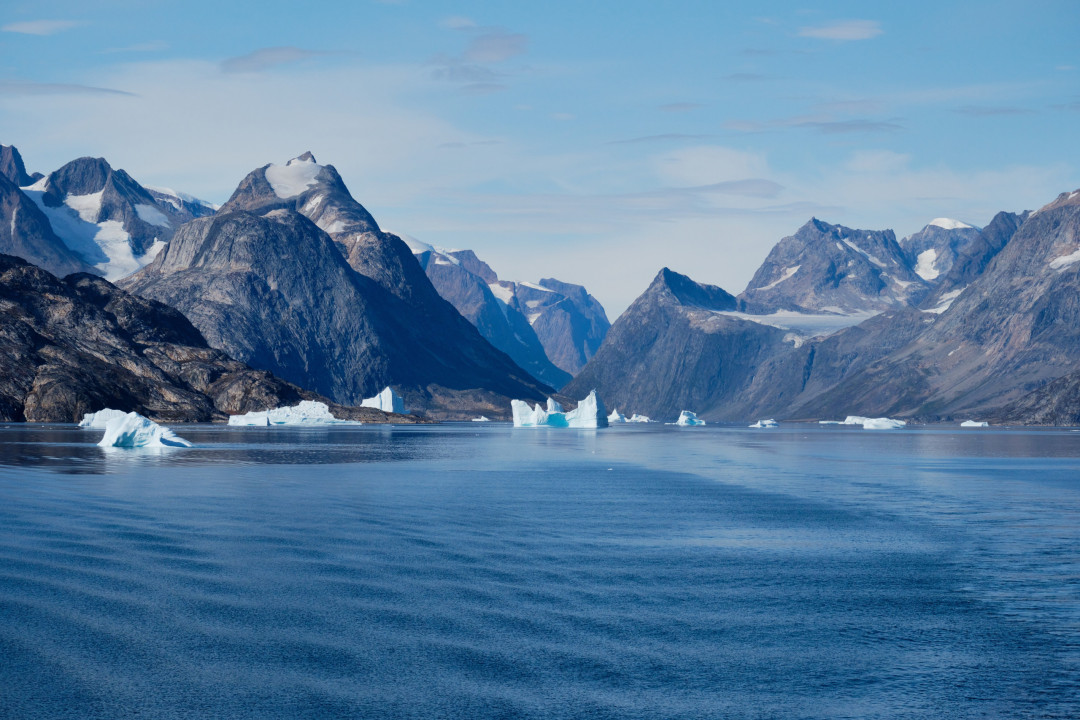






























© Shutterstock
0 / 31 Fotos
The Neoproterozoic Era
- The period between one billion and 543 million years ago is known as the Neoproterozoic Era. During this time, Earth existed in a deep freeze.
© Shutterstock
1 / 31 Fotos
The beginnings of complex life
- So-called "Snowball Earth" was not half as hospitable as the planet we inhabit today. However, it did important work in building the foundations for complex life.
© Shutterstock
2 / 31 Fotos
Life on early Earth
- Indeed, it was during this period that the earliest forms of life, such as microbes, cyanobacteria, and seafloor-dwelling organisms, began to populate the oceans.
© Shutterstock
3 / 31 Fotos
Previous theories
- Previously, scientists had attributed this evolutionary advancement to the increased oxygen levels that characterized Earth during this period.
© Shutterstock
4 / 31 Fotos
New research
- According to a new study, however, the flow of ancient glaciers may have been crucial in laying the groundwork for the evolution of complex organisms.
© Shutterstock
5 / 31 Fotos
The role of glaciation
- Scientists have long since suspected that the movement of glaciers, otherwise known as glaciation', may have played a role in the development of early life.
© Shutterstock
6 / 31 Fotos
How it works
- The process of glaciation is known to scrape up nutrients from the Earth’s crust and dump them into oceans, rivers, and lakes.
© Shutterstock
7 / 31 Fotos
The theory
- The theory is that when this happened on Snowball Earth, the oceans were infused with a new set of nutrients, and this gave rise to complex life.
© Shutterstock
8 / 31 Fotos
Key uncertainties
- Until recently, however, this theory had little merit because scientists were not sure how the glaciers during the Neoproterozoic Era moved.
© Shutterstock
9 / 31 Fotos
Understanding ancient glaciers
- In fact, researchers did not know whether the glaciers during this period moved at all, let alone enough to scrape up minerals and deposit them in the ocean.
© Shutterstock
10 / 31 Fotos
The new study
- However, according to a new study conducted by researchers at Curtin University in Perth, Australia, the glaciers did in fact move on Snowball Earth.
© Shutterstock
11 / 31 Fotos
Examining sediments
- In looking for evidence of glaciation, the researchers examined sediments from rock formations dating back to the Neoproterozoic Era.
© Shutterstock
12 / 31 Fotos
Zircons
- In particular, they looked at zircons, which are exceptionally durable crystalized minerals that can weather extreme geological events.
© Shutterstock
13 / 31 Fotos
Hothouse Earth
- The researchers compared the sediments dating from this period with sediments dating from a period millions of years later – a period known as 'Hothouse Earth' when all the ice was gone.
© Shutterstock
14 / 31 Fotos
Findings
- They found that the composition of the early sediments differed dramatically from the composition of the later sediments.
© Shutterstock
15 / 31 Fotos
Older sediments
- The sediments from the time of Snowball Earth contained older minerals, but they also featured a range of minerals.
© Shutterstock
16 / 31 Fotos
Interpretation
- According to the study’s authors, this suggests that the rocks were exposed and were eroded over time by the movement of glaciers.
© Shutterstock
17 / 31 Fotos
Exposure to moving glaciers
- These rocks may well serve as evidence, therefore, that the glaciers during the Neoproterozoic Era were on the move.
© Shutterstock
18 / 31 Fotos
Fewer minerals
- The rocks from the time of Hothouse Earth, by contrast, featured a narrower range of minerals. This suggests they were not disturbed by moving glaciers.
© Shutterstock
19 / 31 Fotos
No fragile grains
- Moreover, the younger rocks did not contain any fragile grains. This could indicate that flowing water may have dissolved any material that was previously ground down.
© Shutterstock
20 / 31 Fotos
The estimated timeline
- According to the study’s authors, these results serve as evidence that there were at least two major glaciation events between 720 and 635 million years ago.
© Shutterstock
21 / 31 Fotos
Remaining questions
- Whether or not these glacial movements actually contributed to the origins of complex life remains to be seen, however.
© Shutterstock
22 / 31 Fotos
Remaining questions
- Indeed, experts have questioned whether the minerals poured into the oceans during these glaciation events would have been enough to trigger long-term environmental changes.
© Shutterstock
23 / 31 Fotos
Existing research
- Previous studies have suggested that perhaps glaciation events only cause temporary changes to a given environment.
© Shutterstock
24 / 31 Fotos
Ongoing debate
- The findings from this study are therefore being treated as interesting evidence in an ongoing debate, rather than as the final answer.
© Shutterstock
25 / 31 Fotos
A different application
- The study’s authors are keen to emphasize, however, that their work is also interesting for another reason: it provides valuable insights into contemporary climate change.
© Shutterstock
26 / 31 Fotos
Everything is connected
- If they prove nothing else, the results from this study at least serve as a reminder of how changing one part of our planet affects other parts of it.
© Shutterstock
27 / 31 Fotos
Slow changes to Snowball Earth
- During the time of Snowball Earth, these changes took place at a glacial pace over the course of millions of years.
© Shutterstock
28 / 31 Fotos
Changes on modern Earth
- Compared with this, the changes taking place today because of human-induced climate change are doing so at a dizzying speed.
© Shutterstock
29 / 31 Fotos
Pressing issue
- At such a pace, the Earth’s ability to regulate itself is compromised. We are therefore reminded of the urgency of addressing man-made modern climate change. Sources: (CNN)
© Shutterstock
30 / 31 Fotos
© Shutterstock
0 / 31 Fotos
The Neoproterozoic Era
- The period between one billion and 543 million years ago is known as the Neoproterozoic Era. During this time, Earth existed in a deep freeze.
© Shutterstock
1 / 31 Fotos
The beginnings of complex life
- So-called "Snowball Earth" was not half as hospitable as the planet we inhabit today. However, it did important work in building the foundations for complex life.
© Shutterstock
2 / 31 Fotos
Life on early Earth
- Indeed, it was during this period that the earliest forms of life, such as microbes, cyanobacteria, and seafloor-dwelling organisms, began to populate the oceans.
© Shutterstock
3 / 31 Fotos
Previous theories
- Previously, scientists had attributed this evolutionary advancement to the increased oxygen levels that characterized Earth during this period.
© Shutterstock
4 / 31 Fotos
New research
- According to a new study, however, the flow of ancient glaciers may have been crucial in laying the groundwork for the evolution of complex organisms.
© Shutterstock
5 / 31 Fotos
The role of glaciation
- Scientists have long since suspected that the movement of glaciers, otherwise known as glaciation', may have played a role in the development of early life.
© Shutterstock
6 / 31 Fotos
How it works
- The process of glaciation is known to scrape up nutrients from the Earth’s crust and dump them into oceans, rivers, and lakes.
© Shutterstock
7 / 31 Fotos
The theory
- The theory is that when this happened on Snowball Earth, the oceans were infused with a new set of nutrients, and this gave rise to complex life.
© Shutterstock
8 / 31 Fotos
Key uncertainties
- Until recently, however, this theory had little merit because scientists were not sure how the glaciers during the Neoproterozoic Era moved.
© Shutterstock
9 / 31 Fotos
Understanding ancient glaciers
- In fact, researchers did not know whether the glaciers during this period moved at all, let alone enough to scrape up minerals and deposit them in the ocean.
© Shutterstock
10 / 31 Fotos
The new study
- However, according to a new study conducted by researchers at Curtin University in Perth, Australia, the glaciers did in fact move on Snowball Earth.
© Shutterstock
11 / 31 Fotos
Examining sediments
- In looking for evidence of glaciation, the researchers examined sediments from rock formations dating back to the Neoproterozoic Era.
© Shutterstock
12 / 31 Fotos
Zircons
- In particular, they looked at zircons, which are exceptionally durable crystalized minerals that can weather extreme geological events.
© Shutterstock
13 / 31 Fotos
Hothouse Earth
- The researchers compared the sediments dating from this period with sediments dating from a period millions of years later – a period known as 'Hothouse Earth' when all the ice was gone.
© Shutterstock
14 / 31 Fotos
Findings
- They found that the composition of the early sediments differed dramatically from the composition of the later sediments.
© Shutterstock
15 / 31 Fotos
Older sediments
- The sediments from the time of Snowball Earth contained older minerals, but they also featured a range of minerals.
© Shutterstock
16 / 31 Fotos
Interpretation
- According to the study’s authors, this suggests that the rocks were exposed and were eroded over time by the movement of glaciers.
© Shutterstock
17 / 31 Fotos
Exposure to moving glaciers
- These rocks may well serve as evidence, therefore, that the glaciers during the Neoproterozoic Era were on the move.
© Shutterstock
18 / 31 Fotos
Fewer minerals
- The rocks from the time of Hothouse Earth, by contrast, featured a narrower range of minerals. This suggests they were not disturbed by moving glaciers.
© Shutterstock
19 / 31 Fotos
No fragile grains
- Moreover, the younger rocks did not contain any fragile grains. This could indicate that flowing water may have dissolved any material that was previously ground down.
© Shutterstock
20 / 31 Fotos
The estimated timeline
- According to the study’s authors, these results serve as evidence that there were at least two major glaciation events between 720 and 635 million years ago.
© Shutterstock
21 / 31 Fotos
Remaining questions
- Whether or not these glacial movements actually contributed to the origins of complex life remains to be seen, however.
© Shutterstock
22 / 31 Fotos
Remaining questions
- Indeed, experts have questioned whether the minerals poured into the oceans during these glaciation events would have been enough to trigger long-term environmental changes.
© Shutterstock
23 / 31 Fotos
Existing research
- Previous studies have suggested that perhaps glaciation events only cause temporary changes to a given environment.
© Shutterstock
24 / 31 Fotos
Ongoing debate
- The findings from this study are therefore being treated as interesting evidence in an ongoing debate, rather than as the final answer.
© Shutterstock
25 / 31 Fotos
A different application
- The study’s authors are keen to emphasize, however, that their work is also interesting for another reason: it provides valuable insights into contemporary climate change.
© Shutterstock
26 / 31 Fotos
Everything is connected
- If they prove nothing else, the results from this study at least serve as a reminder of how changing one part of our planet affects other parts of it.
© Shutterstock
27 / 31 Fotos
Slow changes to Snowball Earth
- During the time of Snowball Earth, these changes took place at a glacial pace over the course of millions of years.
© Shutterstock
28 / 31 Fotos
Changes on modern Earth
- Compared with this, the changes taking place today because of human-induced climate change are doing so at a dizzying speed.
© Shutterstock
29 / 31 Fotos
Pressing issue
- At such a pace, the Earth’s ability to regulate itself is compromised. We are therefore reminded of the urgency of addressing man-made modern climate change. Sources: (CNN)
© Shutterstock
30 / 31 Fotos
New glacier discovery offers insights into early Earth's origins
Was glaciation the start of complex life?
© Shutterstock
At the beginning of the Neoproterozoic Era-around one billion years ago-there was no trace of life as we know it on Earth. By the end of the period, however, the first forms of life, such has microbes and cyanobacteria, had begun to crop up in the oceans. And exactly what sparked this important development has kept scientists busy for decades. Indeed, there are various theories about what happened during the Neoproterozoic Era to sow the seeds of complex life forms, and one of them involves glaciers.
Intrigued? Check out this gallery to find out more.
RECOMMENDED FOR YOU




































MOST READ
- Last Hour
- Last Day
- Last Week








